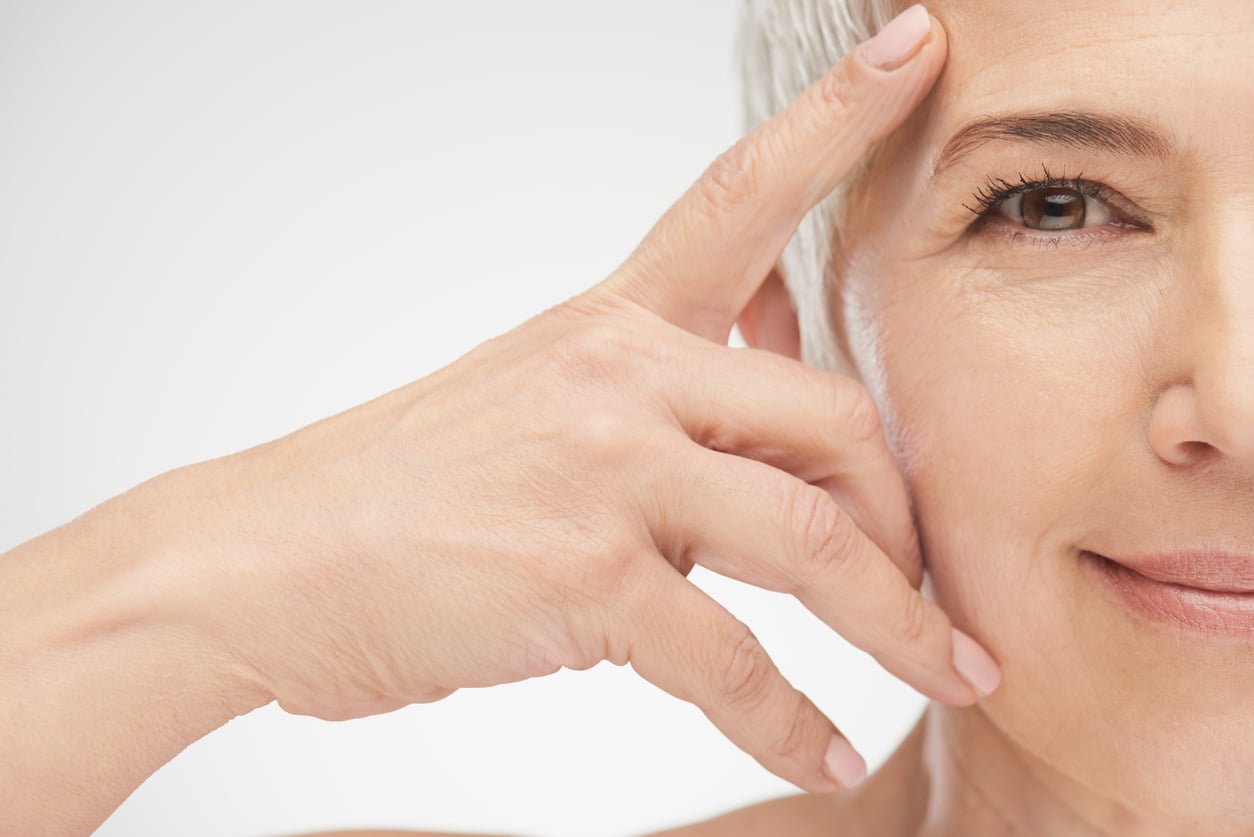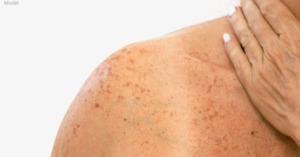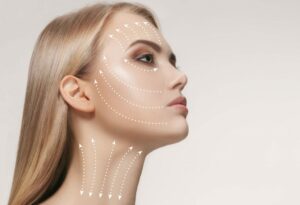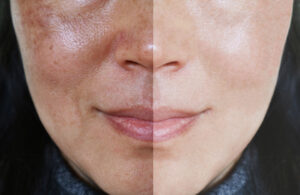6 treatments for sagging skin
What is sagging skin?
Sagging skin is the result of reduced tissue elasticity, which occurs due to insufficient synthesis of collagen and elastin, designed to retain moisture in the skin. With aging, all processes in the dermis begin to proceed more slowly, as a result of which the skin looks fading and atrophic. Such changes are observed at a relatively young age and indicate the need for care, which consists of daily cleansing, moisturizing, and nutrition.
With age, the skin type gradually changes towards dry (with initially dry skin, peeling begins), the first wrinkles start to appear, an excessive amount of fat is deposited in the chin area, and tissues begin to sag (especially for the cheeks). Subsequently, it will only be possible to correct such defects with their strong severity with the help of surgery.
Causes of sagging skin
The main causes of sagging skin include:
- the slower production of hyaluronic acid (responsible for skin hydration, that is, water retention and hydration);
- deterioration of reparative processes;
- the appearance of crosslinks in collagen fibers;
- violation of metabolic processes (regulated by the endocrine system);
- lack of vitamins;
- diseases of the central nervous system;
- abuse of decorative cosmetics (excessive drying of the skin with powder, blush, foundation and other means).
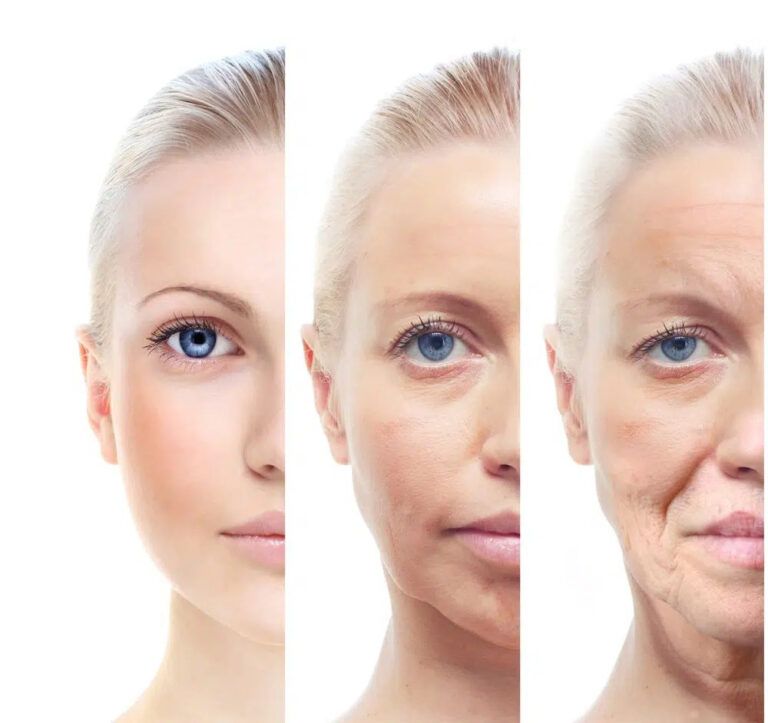
It’s not only the face that has the potential of sagging. Loose stomach skin often appears after rapid weight loss, pregnancy, or as a natural consequence of aging. It is the result of lost elasticity and needs to be stimulated for new collagen to grow. It is possible to reduce the volume of the overhanging fold with the help of lymphatic drainage and myostimulating procedures performed on special equipment. Radical correction involves abdominoplasty. Such surgery requires removing excess skin and adipose tissue, followed by suturing the skin flaps in a new position.
The appearance of sagging skin at a young age is often the result of weight loss when the stretched skin does not have time to adapt to the rapidly changing soft tissue volumes.
Signs of sagging skin
The first signs of sagging skin are loss of definition in facial contours and you may start to notice wrinkles around the area.
For a visual reference on the face, you can use the triangle of beauty. As we age the signs of volume loss and sagging skin mean the triangle is inverted and we begin to notice:
- Wider jawline
- Flatter cheeks
- Wrinkles around the forehead and brow areas
- Hollowness under the eyes
- Sunken temples
- The corners of the mouth begin to point downward.
- Excess skin under the chin or neck
- Visible bones and veins in the hands
6 treatments to get rid of sagging skin
1 Microneedling to treat sagging skin
Also referred to as collagen induction therapy, microneedling is the process of using super-fine needles to create micro-injuries in the epidermis, the top layer of the skin. Although this may seem like it would be highly damaging your skin, the punctures are small enough that your skin will not be damaged long-term. Instead, this process stimulates the area enough for your body to send collagen to the area in order to repair the wound. When this happens, the skin will be “rebuilt” in a sense, stronger than it was before. This procedure can be coupled with collagen-building topical treatments for even better results.
Microneedling has become increasingly popular over the past few years due to its ability to stimulate collagen production and tighten the skin. It’s especially useful for treating skin laxity, which refers to sagging skin caused by aging or genetics.
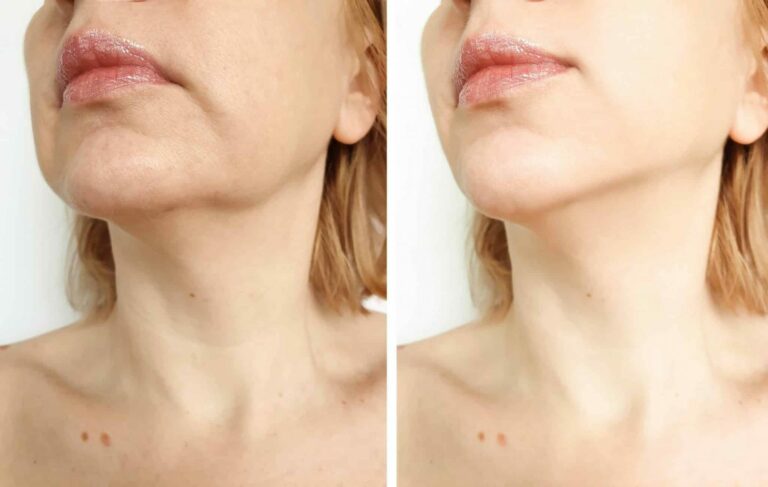
With technology improving significantly over the last few years there are many options available to improve skin laxity. One of these is microneedling, which uses tiny needles to create controlled traumas to the skin. This boosts the production of collagen and elastin in your skin to retexturize, tighten and firm the skin.
Radiofrequency microneedling is an effective treatment for facial and body skin, it gives you some skin rejuvenation with minimal downtime and minimal pain.
2 Chemical Peels
Chemical peels improve the appearance of sagging skin on the face and neck by using a chemical solution to remove the outer layer of old skin. The new skin that replaces it is usually smoother and less wrinkled in appearance.
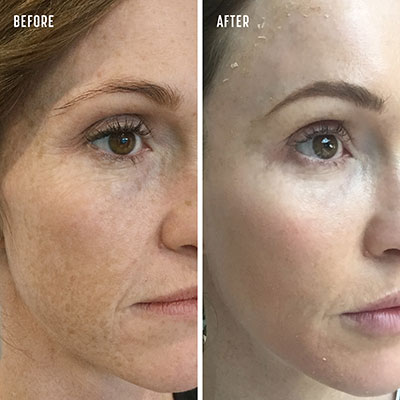
During the procedure, patients may experience a burning sensation lasting five to 10 minutes. Cold compresses may be applied to lessen the pain. Pain medication may be required for deeper peels.
3 Morpheus8
Morpheus8 treatment is an ideal solution for reducing the effects of saggy skin because it helps to promote the growth of new collagen. A type of microneedling device, Morpheus8 is on the cutting edge of fractional resurfacing technology and combines with radiofrequency for long-lasting results.
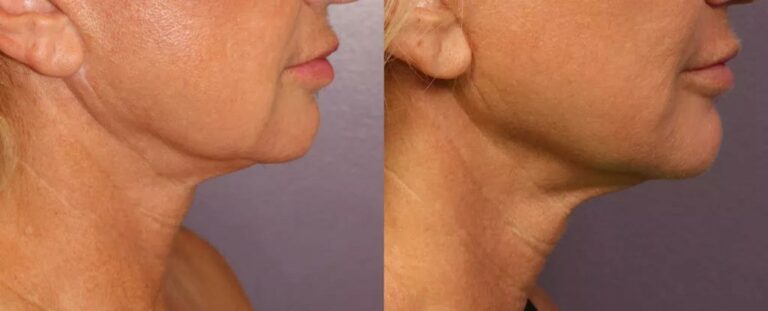
Morpheus8 utilizes fractionated RF energy to stimulate the deepest layers of the skin, encouraging the body to produce new collagen. This removes the appearance of sagging and leaves the skin looking healthy and rejuvenated.
4 Dermal fillers
Dermal fillers are a top treatment choice for eliminating sagging skin as they can be used to rebuild the structure of the face whilst rebooting the skin’s natural supply of hyaluronic acid and smoothing the jawline.
When injected in the cheeks, fillers replace lost volume in the area, which, in turn, restores drooping and receding fat pads to their original position. This gives the lower face the support it needs, softening nasolabial folds (smile lines), marionette lines (creases running from the corner of the mouth to the chin), and jowls.
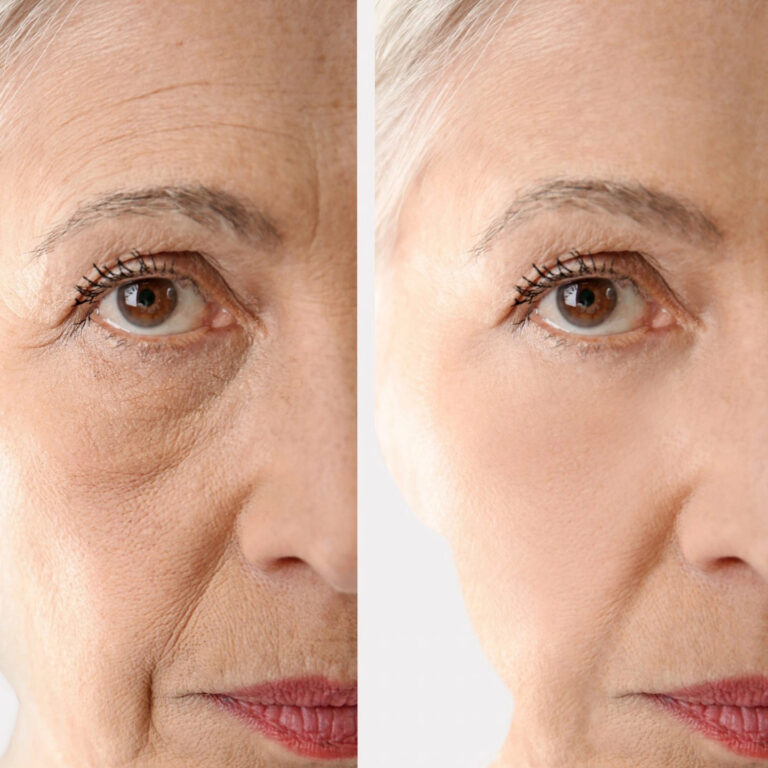
Dermal fillers smooth wrinkles and restore volume to sagging skin. Many people choose to get these injections because results are noticeable right away and recovery time is minimal.
5 PDO Threads
PDO thread lifts provide immediate results because they instantly lift your skin to address sagging issues.
PDO Threads perform lifting and volumizing by generating new collagen and enabling your skin care professional to lift and mold sagging skin into a more youthful position.
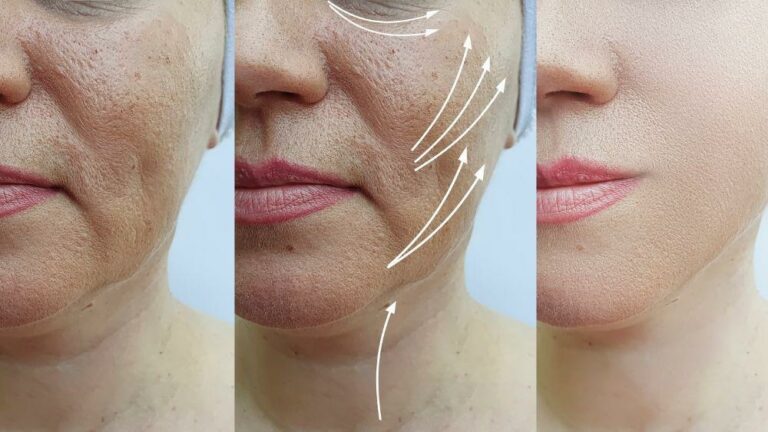
While the threads dissolve within 4-6 months, your results will last much longer because of the increase in collagen that will grow around them. This support will keep your skin in the lifted position for up to a year or more. The additional collagen will also help keep your skin looking more youthful and vibrant.
The best part of a PDO thread lift is that you won’t need to schedule any downtime like you’d need to with surgery. After your treatment is complete, you can get back to your usual activities without any limitations while your body heals itself.
It is important to have realistic expectations with this procedure. It will not give you surgical-like results, but it will improve your appearance in most cases.
6 Sculptra
Sculptra is a great option for patients whose collagen production has decreased and are experiencing excess fat along with loose, sagging skin. As a result, these patients develop wrinkles, folds, creases, and facial hollowing.
Most patients who are ideal candidates for Sculptra are aged 40 years and older, however, this may be a great age-reversing treatment for younger patients who have experienced volume loss in the face.
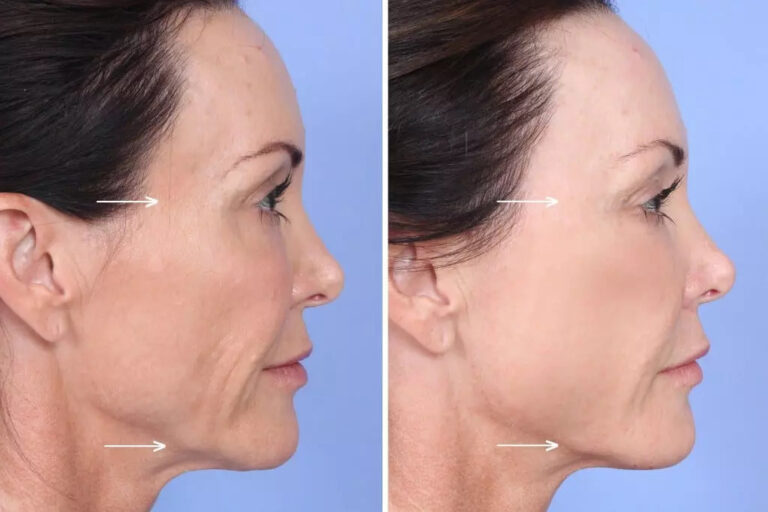
Once Sculptra is injected, it permeates the skin’s dermis, the part of the facial structures involved in skin formation. This triggers the stimulation of the skin’s collagen in treated areas.
When used in the face, it provides both volume and lift in areas that have become saggy or hollow. While the full aesthetic benefits take several months, the results of a Sculptra treatment can last for two years or more.

